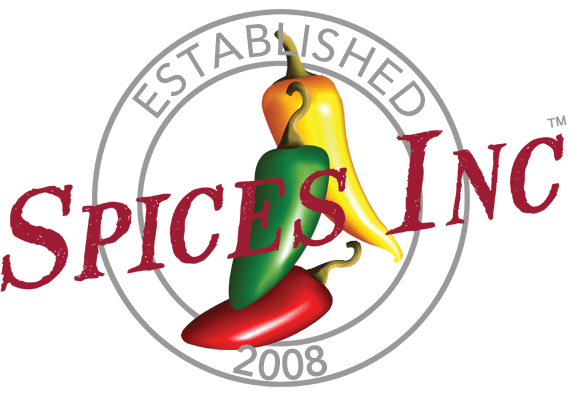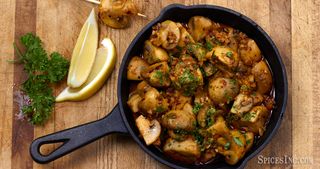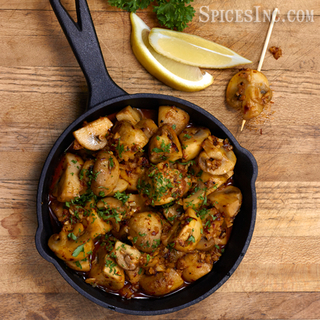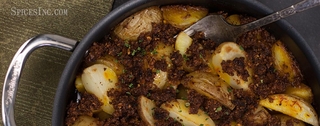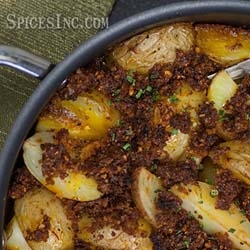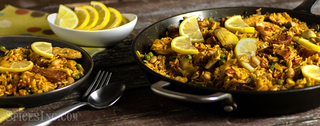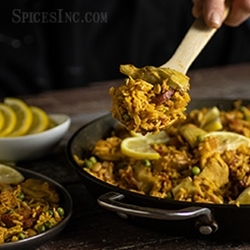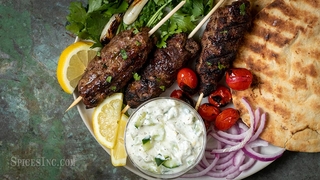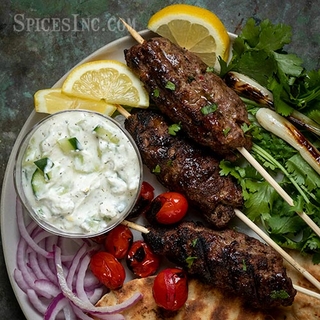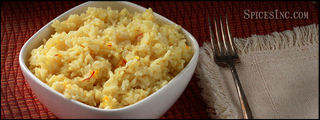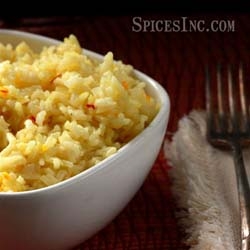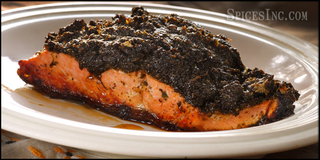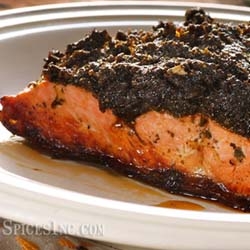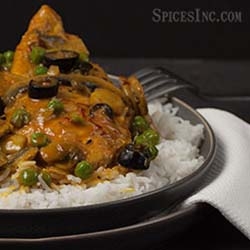Saffron
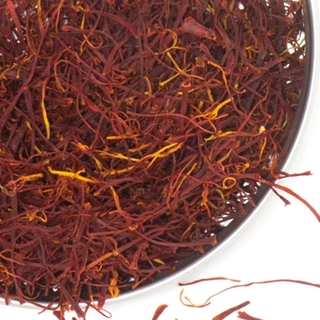

Saffron
Saffron, Crocus sativus, is the world’s most expensive spice. It is also known as saffron spice, saffron threads, saffron herb, or kesar.
Saffron comes from the three scarlet stigmas found at the center of the “saffron crocus”. Harvest is labor-intensive and must be done by hand. It takes about 1,000 flowers to harvest just one ounce of saffron.
A good rule of thumb is to use about three strands a person. There are approximately 463 threads (3/8" to ½" in length) per gram of saffron. One 1 gram yields approximately 150 servings.
Saffron is popular with independent spice shops; Mexican, Indian, American, and pizza restaurants; subscription and jam manufacturers; and olive oil shops.
Flavor Profile
Saffron is boldly floral and has a rich, earthy taste.
How To Use
Saffron is beautifully showcased in flan and in rice dishes, like risotto or Indian biryani, or in potato dishes like Roasted Spanish Potatoes. It’s classic when paired with fish as in the recipe for Salmon Charmoula. Add saffron to bouillabaisse or make a rich paella like Valencia Paella. Champinones Al Ajillo is a savory Spanish garlic mushroom side dish that uses saffron for color and flavor. Adding Saffron to the simmering liquid gives Spanish Saffron Chicken the elegance of a long-cooking dish, even though it’s ready in under an hour.
Saffron should be used sparingly and when used in larger amounts tends to make dishes bitter.
Choose saffron when making curries, shellfish, chicken, cream sauces, soups, polenta, rice dishes, ice cream, marshmallows, scones, cakes, and breads.
Saffron pairs well with cumin, coriander, mint, rose, nutmeg, nuts, sugars, cardamom, milk, cinnamon, cloves, and raisins.
| Also Called | Saffron spice, saffron threads, saffron herb, kesar |
| Species | Crocus sativus |
| Ingredients | Pure saffron filaments |
| Flavor Profile | Bold, floral, rich, earthy |
| Recommended Uses | Curries, seafood, chicken, cream sauces, soups, polenta, rice dishes, desserts, baked goods |
| Cuisine | Indian, Spanish, Mediterranean, African, Middle Eastern |
| How To Store | Airtight container in a cool, dark place |
| Shelf Life | 6-12 months |
| Country of Origin | Spain |
Nutrition Facts
Serving Size1 tsp
Amount Per Serving
Calories2
% Daily Value*
Total Fat0g0%
Saturated Fat0g0%
Trans Fat0g
Polyunsaturated Fat0g
Monounsaturated Fat0g
Cholesterol0mg0%
Sodium1.0mg0%
Total Carbohydrate0.5g0%
Dietary Fiber0.0g0%
Total Sugars0.0g
Added Sugars0g0%
Sugar Alcohol0.0g
Protein0.1g0%
Vitamin D0mcg0%
Calcium1mg0%
Iron0mg0%
Potassium12mg0%
*The % Daily Value (DV) tells you how much a nutrient in a serving of food contributes to a daily diet. 2,000 calories a day is used for general nutrition advice. These values were calculated and therefore are approximate. For more accuracy, testing is advised.
